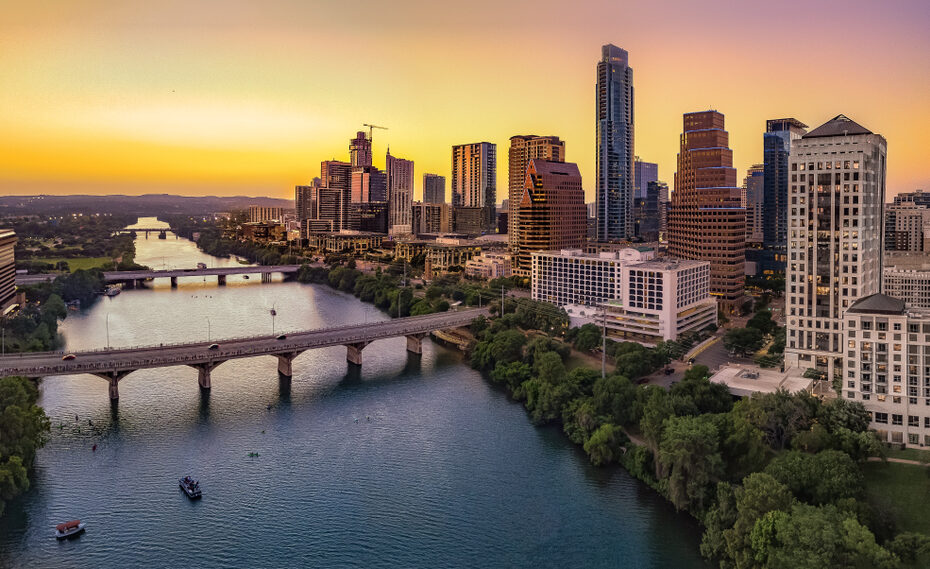If you’re weighing the pros and cons of living in Austin, Texas, there’s a lot you already know.
You know about Austin’s culture, its climate, and its lack of income tax. For a lot of people, these are big draws.
Now, you may be wondering, what are the disadvantages?
Is the climate always good — and if so, why are there so many places to cool off?
It’s great having live music available every night of the week — but what about when you want an early night?
In this piece we’ll drill down on what we see are some of the pros and cons of living in Austin — and Texas as a whole.
Every rose has its thorns. Let’s take off our rose-colored glasses for an in-depth look at what life in Austin is like, warts and all.
Why So Many Are Moving to Austin
People may soon look back at the past decade as the point that Austin hit the mainstream.
The number of new residents of Austin spent the 2010s pegged at 100 per day — making Greater Austin the fastest growing metro area in the country. In 2019 it hit its highest mark yet, averaging 168 new residents per day.
Even in the upheaval of 2020, that number barely fell. Net migration stood at 53,266 people, for an average of 146 new Austinites per day.
Numbers this consistent show that the Austin boom is more than hype. There are real reasons that people over the years have been moving to Austin.
Do they match your motivations? Read on to find out!
Benefits of Living in Austin
Is Austin, Texas a good place to live?
Austin has a lot going for it — a distinctive personality, a great arts scene, an inexhaustible restaurant bucket list, and one of the most varied natural landscapes of ANY city.
You know our position. Let’s break down Austin’s many advantages.
Live Music Scene
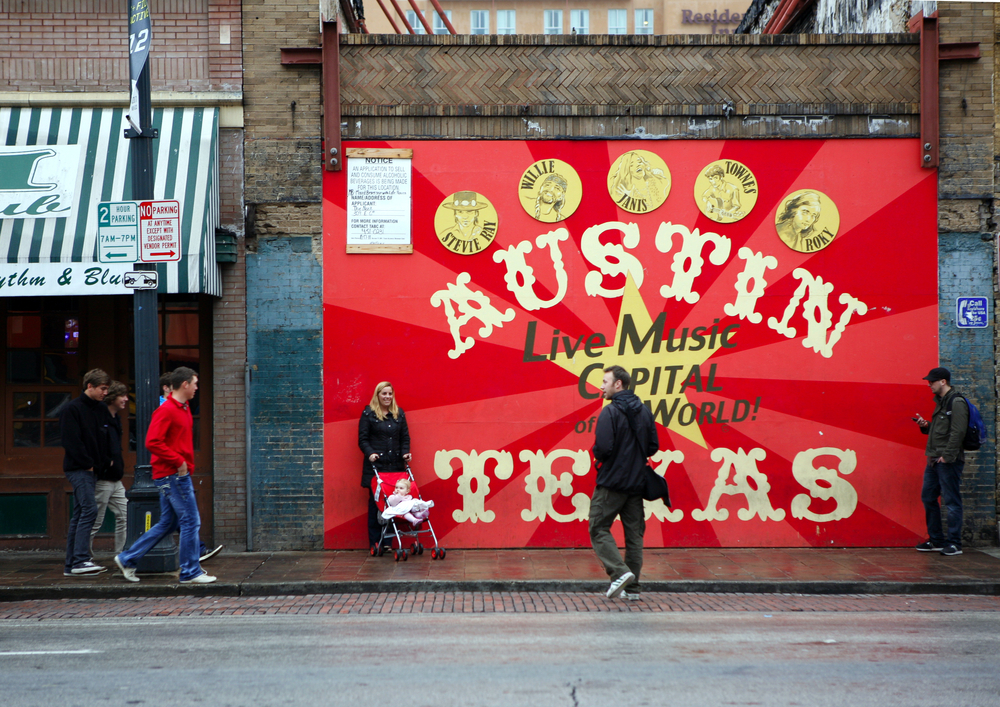
Editorial credit: GSPhotography / Shutterstock.com
Austin isn’t called the “live music capital of the world” for nothing.
Live music is part of the city’s DNA. Follow East Austin’s Tejano Walking Trail to discover one of Austin’s greatest contributions to music. You know the artist Selena, the top-selling Latin artist of the 1990s whose life Netflix recently chronicled? Tejano is her style, along with that of many Austin legends.
Across the spectrum, you’ll find two of the greatest music festivals in the U.S., South by Southwest and Austin City Limits.
The list of Austin music legends is long. From Janis Joplin to Stevie Ray Vaughn, Spoon to Explosions in the Sky, Austin acts have helped redefine American music through the past half-century.
But Austin isn’t just a breeding ground for legends. Its 250-odd live music clubs — and many more street corners and restaurant side tables — give city life its soundtrack.
Warm Weather
Are you a snowbird in search of a non-Florida landing spot? You might want to join the 3.3% of Austin’s new residents checking in from New York State… or the 3.1% leaving Florida for equally hot pastures.
What about the 8% of new Austin residents who’ve arrived from California? Weather motivations are up for debate when you come from such a big state, but SoCal-originating Austinites aren’t sacrificing much of their winter comfort.
The coldest temperatures Austin averages are in the low 40s — hitting low 60s during the winter daytimes!
This makes Austin’s outdoors accessible the whole year round… provided you don’t mind the heat at the other end of the spectrum.
Great Food
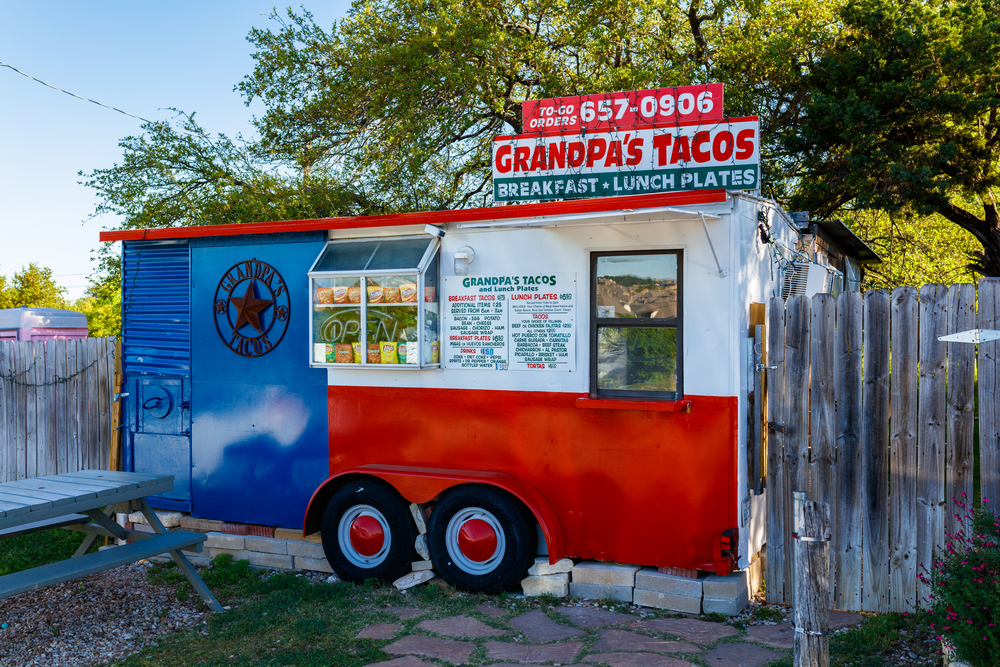
Editorial credit: Fotoluminate LLC / Shutterstock.com
If you’re the typical American, chances are you’re already a fan of Austin cuisine.
Crave brisket and other barbecued meats? Austin is a national hub. Always wondered where Tex-Mex comes from? Austin is as close to a ground zero as it comes. Breakfast taco-curious? You’ll fit right in.
The hospitality scene is the connective tissue of Austin’s going-out culture. And the city’s restaurateurs take their role seriously.
Whether it’s keeping generational legacies of barbecue alive or piggybacking off the pickleback trend with a side of pickleball, Austin knows how to keep adventurous palates entertained.
No State Income Tax
It’s no accident that the two biggest suppliers of new Austinites are California and New York State, rated fourth and first respectively in average income tax.
The number for Texas? Zero. No income tax at all.
This is one of the biggest reasons that people cite for relocating to Texas. And it fits into a general ethos — pay for what you use.
It’s not as if Texas institutions are behind states with income tax. In U.S. News rankings, the state finishes 31st in healthcare, 34th in education, and 16th in infrastructure — solidly middle-of-the-pack.
One of the Best Job Markets in the U.S.
What salary do you need to live in Austin? It’s not a problem for many of the new transplants, who are moving to Austin for the booming job market.
Before the pandemic upended everything, Austin finished on top of the Wall Street Journal’s job market rankings for the second year in a row. Greater Austin beat out 380 other U.S. metro areas in unemployment rate, labor-force participation, job growth, labor-force growth, and wage growth.
Tesla, Amazon, and Apple highlight the tech world’s investment in Austin — nodded to in the nickname ‘Silicon Hills.’ There are the traditional job engines of the University of Texas and the state capital, as well as thriving healthcare and engineering sectors.
And yup — the city’s bars, cafés, restaurants, and boutiques will likely pick up where they left off as pandemic restrictions ease.
One of the Healthiest Cities in America
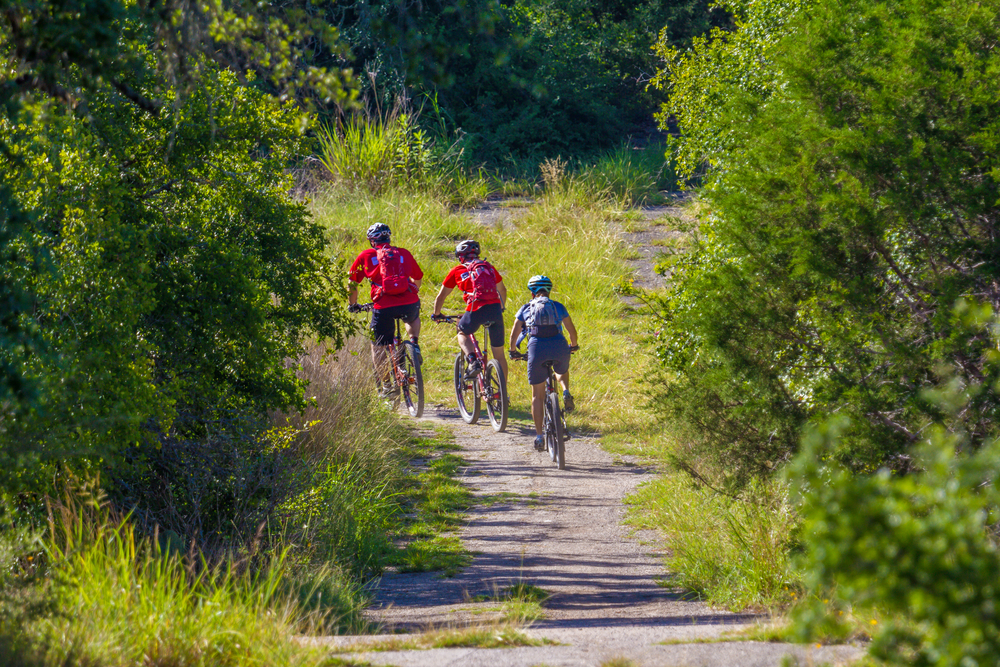
Editorial credit: Philip Arno Photography / Shutterstock.com
In WalletHub’s ranking of the healthiest U.S. cities, Austin ranked an unsurprising seventh.
But we take issue with this high ranking anyway. It’s not that we’re surprised that Austin finished third on the ‘healthiest restaurants’ list (thanks Keto diet!) …
The lowest score making up this ranking came in the fitness category. And while WalletHub ranked Austin fifth in running trails nationwide, it penalized the city for a higher-than-average monthly fitness club cost.
Our question is this — who in their right mind is staying indoors to do their exercise in Austin?
Big Lakes in the City
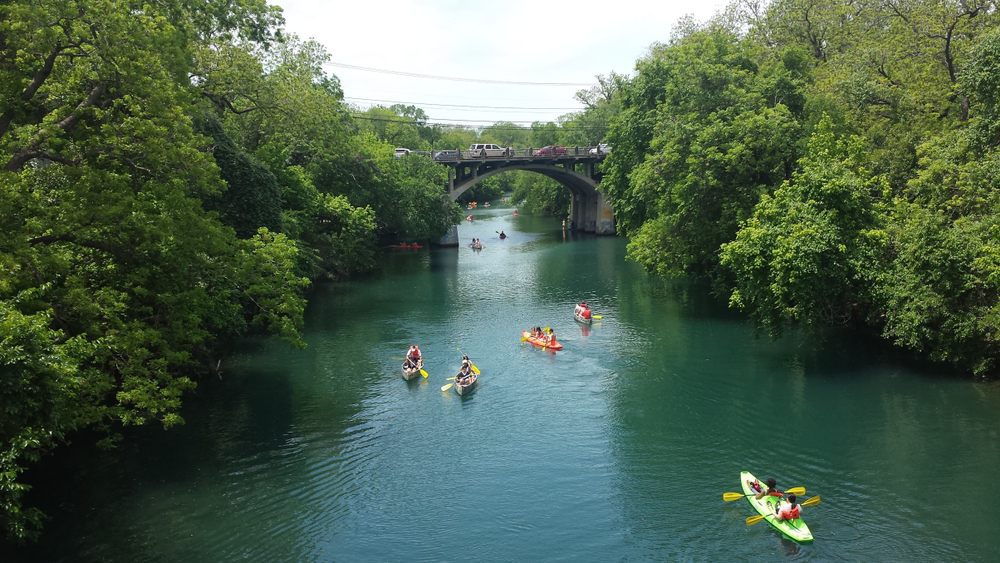
Image Credit: Skylar Dawn/Shutterstock.com
The other big fitness peg is in the city’s ample lakes. But watersports aren’t their main draw. Their fitness benefits are more a side effect of a life lived lakeside.
All of the city’s lakes besides one are formed by bends in the Colorado River. Walter E. Long Lake sits off the river’s course in northeastern Austin, surrounded by a wildlife sanctuary. Though it was originally used for cooling an adjacent power plant, this tributary of Decker Creek is now home to fishable populations of largemouth and hybrid striped bass.
Lady Bird Lake is one of Austin’s main attractions — serving as the fulcrum of the Ann and Roy Butler Hike-and-Bike Trail, situated between downtown, south, and east Austin. It’s large enough to host 10 miles of trails in all!
Head west and you’ll find Lake Austin and Lake Travis. They host a variety of activities — with Lake Travis even accommodating a water park!
Drawbacks of Living in Austin
When you’re an old-timer, it’s easy to judge the city based on what it was. And the critics aren’t necessarily wrong — along with good jobs and a high quality of life eventually come a higher cost of living, for example.
A development like this can affect the delicate balance that a well-functioning city needs. Skyrocketing property values and a growing population pushes some people to the margins, creating greater traffic and less overall connection.
These are the growing pains that are hitting Austin now, and not everyone thinks that its major city status has been worth the sacrifice.
High Cost of Living
Some see Austin’s progress as a zero-sum game.
For every new corporation that arrives, out go some mom-and-pop operations. The new transplants that come for the city’s new jobs push Austinites who’ve kept their old jobs further from the center.
Little by little, these critics argue, the things that make Austin special are eroding with these changes.
What’s the use of having the best live music scene in the world if you’ve got to work a 9-to-5 to afford it?
Humidity
Here’s something that doesn’t come across in Instagram pictures of sunny days — brutally high humidity.
Austin rates 20th on the list of most humid U.S. cities… but it can seem worse when the thermometer hits 107˚F.
And if you’ve got asthma, allergies, or a nice selection of vinyl that you’d like to keep in playable shape? You’re keeping the AC on five months a year.
Traffic
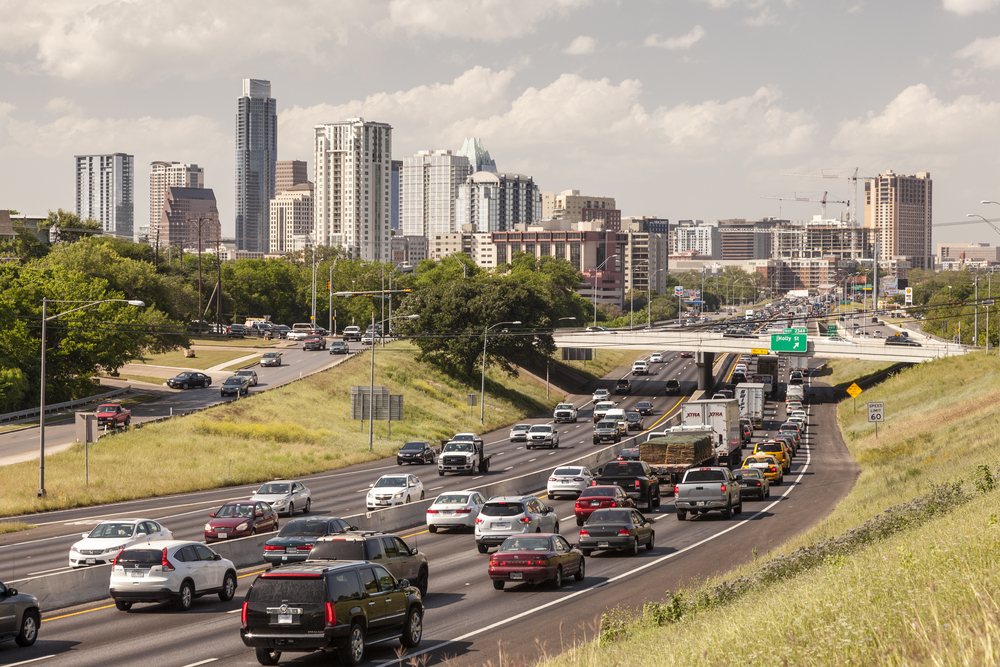
Editorial credit: Philip Lange / Shutterstock.com
Ask any long-time Austinite the biggest difference between the Austin of today and Austin 20 years ago — odds are they’ll say the traffic.
The average Austin driver spent about 66 hours stuck in traffic in 2017, which is good for the 14th-worst mark in the country. That’s about a week-and-a-half of 40-hour work weeks down the drain, but Austinites don’t get paid for it. Instead they lose $1,270 annually in fuel and lost productivity costs.
For some old-timers, heavy traffic and aggressive drivers have ruined the connectedness that once made Austin a big-little city.
Gone are the days where you could start your night in downtown, head to south Austin for a show, then go wherever the night takes you. Life in Austin now requires planning.
A Limited Sports Scene
Like college sports? Odds are, the University of Texas fields a great team in whatever you choose.
They don’t have a men’s soccer team — but the newly-arrived MLS team Austin FC has you covered there.
On the other hand, if you’re a transplant looking to stay connected to the major sports team that played in your home city, you’ll have to drive to Houston or San Antonio.
Worse yet — Austin’s hipster bars might not even show the big game!
Higher Property Taxes
No income tax is a big draw, sure. But where do you think Texas gets its funding from?
It makes up for its income tax shortfall with relatively high sales and property taxes, ranking ninth in each category. This pulls the state’s overall tax burden up to 30th in the U.S.
Compared with this true tax picture, Texas institutions start to look like less of a good deal. Remember how we described the healthcare and education systems as solidly middle-of-the-pack? You get what you pay for.
Poor Public Transportation (For Now)
OK, this one is kind of a pro… in the future at least.
The new rail lines, expanded bus routes, and added park-and-rides that form the bulk of the $7.1 billion Project Connect should take Austin to the forefront of public transportation nationwide.
Now for the bad news. It will be another seven years before the city’s first rail line is operational.
It’s Still a College Town
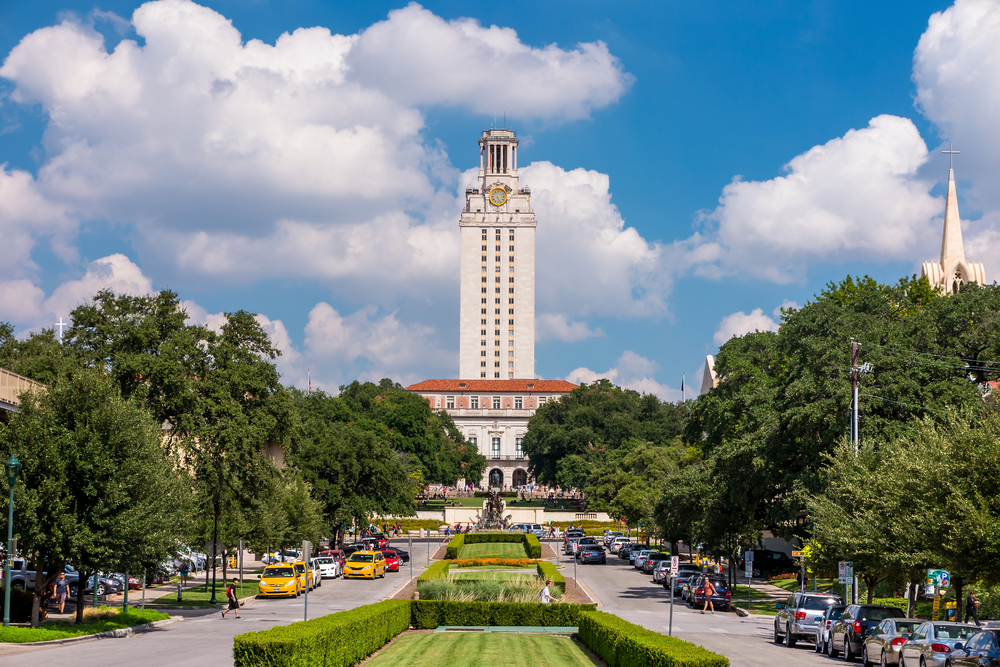
Image credit: f11photo/Shutterstock.com
Arguably the most famous line uttered by Austinite Matthew McConaughey in his sleazy Dazed and Confused breakout role is this:
“I get older, they stay the same age.”
Even his creepy film character Wooderson might eventually have groaned while saying this.
In 2020, Austin ranked as the second-best college town in the U.S. And you know what that means.
50,000-plus college kids have the run of the city’s best bars, hiking trails, and parks for nine months of the year.
The University of Texas flagship campus takes up 437 prime acres in the heart of downtown Austin. And if you don’t have one of those cushy professional jobs that Austin seems to have in abundance, odds are you’ll be competing with these college kids for reasonably-priced housing.
Is Austin the Right City for You?
We tried not to pull too many punches on the cons, but we hope it’s obvious where our personal preference lies.
But that isn’t the question we’re here to address. And ultimately, it’s a question only you can answer.
Austin’s not for everybody — and it didn’t fit everyone in the past either. If you’re drawn to its strengths, hopefully they’ll be enough to love its imperfections too.
